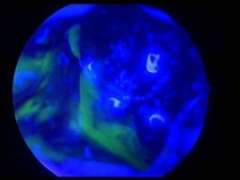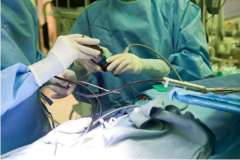Endoscopic Skull Base Surgery
Find your care
We treat pituitary tumors using the latest innovations in minimally invasive procedures. To connect with an expert in the pituitary tumor program, call 310-825-5111.
Maximizing Functional Outcomes through Minimally Invasive Techniques
Spontaneous Cerebrospinal Fluid Leaks

The brain is contained within a covering known as the dura, suspended in cerebrospinal fluid (CSF) that cushions and protects it. Sometimes, with trauma or chronically increased brain pressure, areas of the dura and skull may thin or break, resulting in a leak of CSF, typically into the nasal cavity. The bone separating the nasal cavity from the brain is very thin, making it a high-risk area for this phenomenon to occur. This is most often seen in middle-aged women, who may present with days, weeks, or even months of clear fluid draining from one or both nostrils. Left untreated, CSF leaks can result in headaches, meningitis, or even subdural hematomas (bleeding on the outside of the brain), of which the latter two conditions can be fatal.
Traditionally, CSF leaks are repaired through an open brain surgery, also known as a craniotomy. The skin incisions necessary with these methods vary in size, but may range anywhere from two to twelve inches. Alternatively, through a multidisciplinary team comprised of otolaryngologists and neurosurgeons, members of the UCLA Endoscopic Skull Base Surgery Team are able to repair these CSF leaks through the nose in a minimally invasive manner, without any skin incisions or craniotomies.
Sinonasal Tumors

Tumors of the nasal cavities and sinuses are in a unique position given their proximity to the eyes and brain. Oftentimes they can invade into these neighboring areas, requiring a multidisciplinary team of otolaryngologists, ophthalmologists, and neurosurgeons to safely remove these tumors. However, traditional open approaches utilize incisions through the face to achieve this goal.
Mounting evidence supports the use of advanced endoscopic techniques to remove these tumors, with equal and even better functional and clinical outcomes. The cosmetic benefits, although secondary, are unequivocal, as the tumors are removed through the nose, without any external incisions. The UCLA Endoscopic Skull Base Surgery Team specializes in this multidisciplinary approach to remove these tumors in a minimally invasive manner.